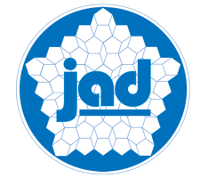Hearing Hands
During the first forty years, conditioned by the perception of the “half empty glass” our focus was on the rehabilitative aspects associated with Deafness. We sought to put in place programmes and activities in response to the needs of the Deaf community. We found that, a hearing loss unlike vision loss had an associated stigma. Many persons in our society interpreted deafness to be synonymous with being Dumb or being Daft. These misconceptions have somewhat been eroded through advocacy and public education over the years.
Our focus was primarily on profoundly deaf persons and our greatest impact on this sector was through education. Our first school was the St. Christopher’s School for the Deaf was established in 1938. Continued development of other facilities over the years has resulted in the establishment of eight educational facilities ranging in programmes from Pre-School to Continuing Education.
But not all persons with a hearing loss consider themselves Deaf or disabled. In the latter twenty years our focus was expanded to accommodate the perception of deafness as the “half full glass”, thus we opened our doors for the expansion of services for hearing enhancement and hearing conservation. The most significant progress has been made in the last ten years, as we journeyed towards the development of Comprehensive Clinical Service Delivery which includes: clinical hearing assessment, technical services to support the most up to date technology in hearing assistive devices, parent and family guidance, educational assessment and placement and integration support services. Our attention has also been expanded to include children in mainstream schools for regular hearing screening and Industrial Hearing Conservation.
But what of our focus on hands? The concept of hands is symbolic in the communication purposes and is significant in the development path that we pursued. In the first thirty years of our programme there was a deliberate effort to suppress the use of hands in the communication process. Oralism was the dominant approach in educational instruction and by the mid-70’s there was a gradual shift towards Total Communication, which by necessity embraced the use of hands. We have now adopted a multilingual approach to instruction and this has had far reaching implications for the social identity of the Deaf community. For years there was no recognition given to the Deaf community as having a distinctive identity, language or culture. This perception has gradually been modified with recognition being accorded at the national level through a Policy on Disability.
The issue of communication and social identity lies at the heart of the development of the Deaf community. The ability to communicate one’s views, make personal decisions, influence decisions concerning self and the larger community, the ability to feel proud about who you are, and to feel that there are no barriers to self actualization. These represent the goals we constantly strive for.
By focusing on modifying our communication approach we have also modified the model of development governing our relationship with the Deaf community. In practical terms we have seen a transition from a paternalistic approach, to one of partnership, which has led to the development of a nucleous for self-management among the Deaf in the Deaf community. Our sixty years of investment in education is beginning to bear fruit as we begin to see the emergence of responsible and productive Deaf citizens. There is a vibrant cadre of Deaf adults who are able to function as representatives of their community on decision-making bodies and they now strive for the goal of establishing a National Association of the Deaf.
The benefits of a partnership approach are far reaching, but perhaps most significant in our experience is its impact on fostering a client driven service delivery approach in our planning. Secondly, by involving Deaf individuals in planning and evaluation of activities it has led to personal development of individuals who are confident, and prepared to challenge the system to meet their needs. This is evident in the forthright nature of our youth who now publish their opinions in the public printed media and express their views on radio and television programmes. This development on their part, has had a further positive impact of modifying public perception of the Deaf.
The accumulative effect of the past sixty years has placed us in a most exciting stage of organisational development and provides a fantastic basis for future growth. This sense of hope comes firstly from the impact of technology, on hearing assessment and enhancement, on education through computer-aided learning and on our ability to access and to participate in information sharing. Secondly, the quality of partnerships we have been able to forge for enriching our programme has been particularly rewarding in the areas of clinical, technical and educational services development. Thirdly, the collaborative approach adopted in the disability sector through the formation of a Coalition on Disability is also very encouraging. Such collaboration gave energy to the drafting and piloting of a National Policy on Disability through Parliament. This now provides the basis for strengthening our efforts for growth in the sector. The fourth area for hope is the increasing bond between the NGO sector and the State for the purpose of developing a better quality of life for persons with disability.
Committed to a further sixty years of meaningful development in the Deaf community our strategic focus for the years 2000-2004 has identified the following objectives:
- The JAD will mobilize major stakeholders and secure their participation in the implementation of a common vision.
- The JAD will actively engage in organizational renewal that will enhance the dynamism and focus of its work.
- The JAD will increase public interest and confidence in the services and products of its system.
- The JAD will increase the standard of academic and skill competence of graduates entering the employment sector or continuing education programmes.
- The JAD will fully integrate in its programme principles of personnel development of Deaf persons to ensure maturity, self-reliance, and a positive outlook on life.
- The JAD will work with major stakeholders to achieve acceptance of Deaf persons within their families and the wider community.
- The JAD will mobilize adequate financial and human resources for programme development and sustainability.
We are excited by the prospect of being able to draw on the collective wisdom of this egroup for mobilizing development in this sector. However, our context proposes some very special challenges in respect of:
- Responding to the demands for services in an environment where persons cannot afford to pay for it.
- The need for much research to foster a better understanding of our context and to inform our development path.
- Our desire to benefit from the technological advancements in the field of Audiology brings with it a challenge for building services from the ground up such as our Newborn Hearing Screening Programme.
We invite you to share your views on any of the issues that have been raised. The wide-ranging nature of this initial communication is deliberately intended to convey the fact that whatever your area of expertise, you can make a worthwhile contribution to advancing our purpose.
____
Iris Soutar
Executive Officer
Jamaica Association for the Deaf





